Introduction
Orcust, the bunch of musical instruments we have all grown to love, is an archetype of DARK Machines. The whole playstyle revolves around utilizing the GY and having a lot of monsters on the field to Link Summon. From the "Bombgirsu pass" strategy of yore to the I:P boards of today, players have adapted the deck as the meta changed over time. The banlist and new card releases helped facilitate some of these changes. I will be talking about four major events in this deck's timeline - the release of Dark Neostorm, Bardiche's ban, Mermaid's ban, and the release of Chaos Impact - and how each affected the Orcust deck.
Without further ado, let us take a look back at the first week after the Soul Fusion Sneak Peek, when no one knew what the deck did...
Peak Orcust Strategy
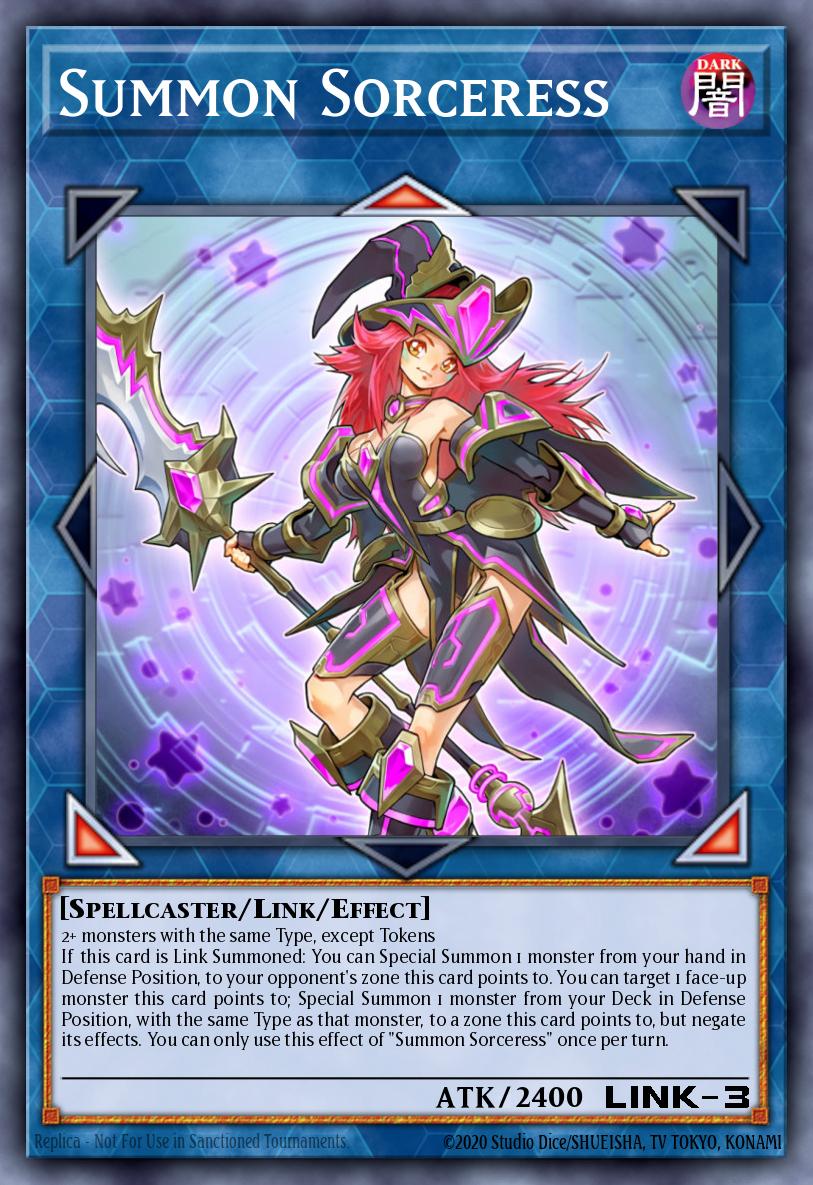
If you were like me on the weekend of the SOFU sneak peek, you would've looked at some of the rares that people were pulling and thought, "Wow, that seems like it would make an interesting deck."
Konami first released the Orcust archetype in October 2018 in SOFU. The first members released were Orcusts Harp Horror, Cymbal Skeleton, and Brass Bombard. Galatea, the Orcust Automaton, Longirsu, the Orcust Orchestrator, and Orcustrion were the first Link monsters released. Rounding out the set were the spell cards Orcustrated Einsatz, Orcustrated Return, and Orcustrated Babel.
For the first few months that the deck was released, there were many weird decklists thrown out there. Extra Decks were filled with any number of DARK monsters, including anything from Wee Witch's Apprentice to Decode Talker. By far the most utilized DARK Link was Summon Sorceress, released as a JUMP Promo in March 2018. Although it required monsters of the same type, all Orcusts are Machines anyway. It being dark also helped a lot. With all those materials on the board, the DARK Link-4 of choice was Topologic Bomber Dragon. By combining it with Orcustrated Babel, it was possible to trigger Bomber's effect at least twice per opponent's turn. Combine it with Longirsu and you have yet another form of disruption.
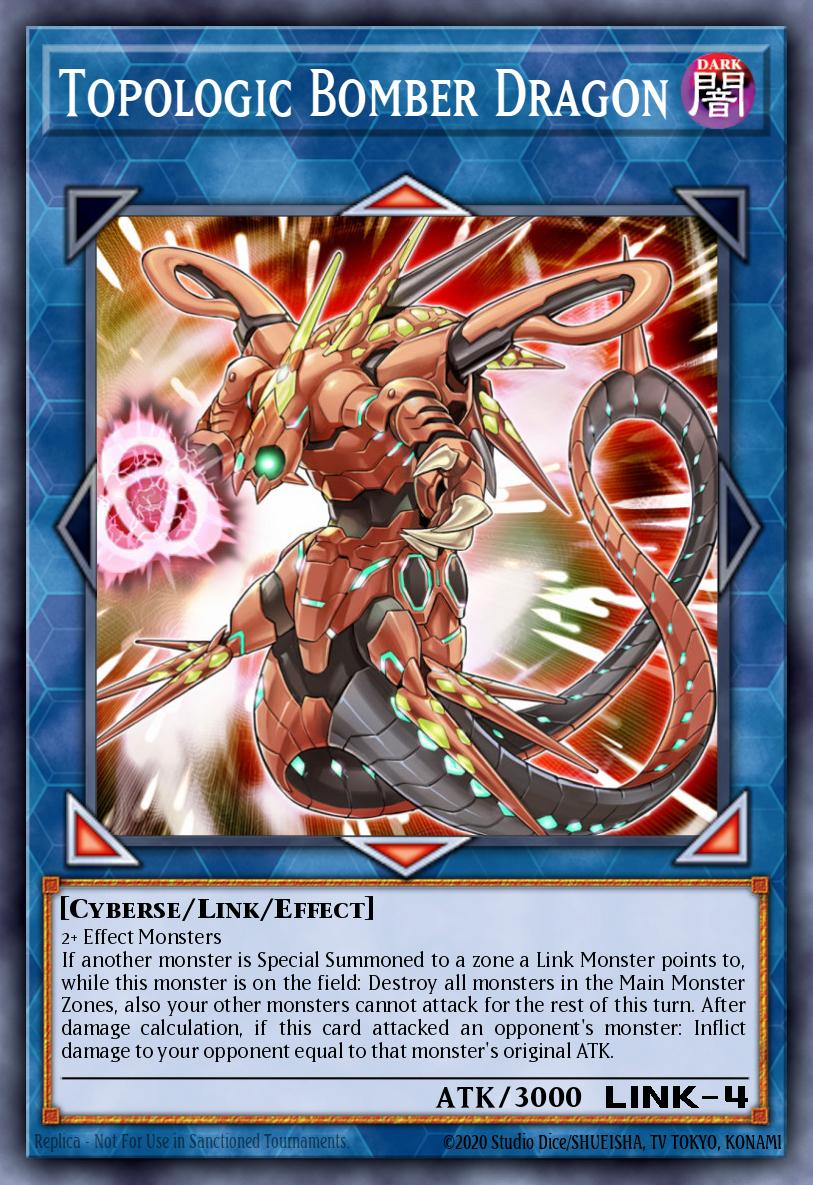
Or Not so Peak...
Obviously, there are a few problems with this strategy, the first being the field spell. If the opponent got rid of it, the entire playstyle gets thrown out the window. With no way to Special Summon monsters during the opponent's turn, Bomber Dragon just sits on the field.
Another thing that made the deck not so good was the fact that the monsters (except Longirsu) have no protection whatsoever. A well-timed Ghost Ogre & Snow Rabbit will dispatch the Bomber effectively, and effect negation turns it into a sitting duck.
By far the biggest problem was brick hands. This deck relied all too much on getting any monster and an Orcust on the field. If not, nothing would be done. Danger! monsters helped this a bit, but overall the deck did not do much at the beginning. That would all change with the release of Savage Strike.
Opening Pandora's (Galatea's?) Box
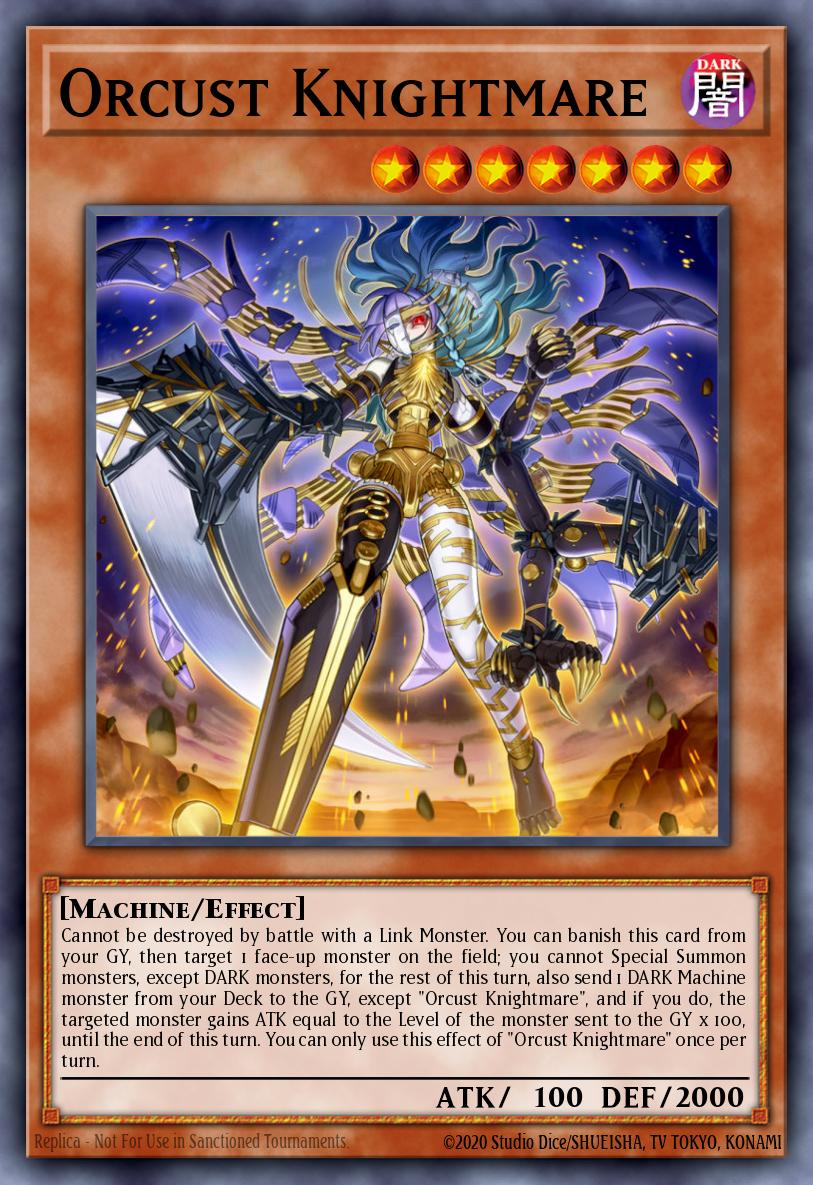 Konami released SAST in February of 2019. It only had three pieces of support for Orcusts: a lvl 7 monster and two traps. Orcustrated Release was mostly useless, being a Monster Reborn by tributing two Machines (double Reborn if the opponent controls a Link monster). Orcustrated Core was slightly better, as it could protect your cards from destruction. The monster, on the other hand, completely changed Orcusts forever.
Konami released SAST in February of 2019. It only had three pieces of support for Orcusts: a lvl 7 monster and two traps. Orcustrated Release was mostly useless, being a Monster Reborn by tributing two Machines (double Reborn if the opponent controls a Link monster). Orcustrated Core was slightly better, as it could protect your cards from destruction. The monster, on the other hand, completely changed Orcusts forever.Orcust Knightmare can banish itself from the GY to send a DARK Machine monster from your deck to the GY. Although this effect is pretty good, it was by no means the reason that Orcust became competitively viable.
If you pay attention to the name, you will see that it has the name "Knightmare" (LORE!). That makes it related to the "Knightmare" link monsters that Konami released in Flames of Destruction.
In fact, you can summon it off of Knightmare Mermaid, effectively making the Orcust Combo doable with any two monsters with different names. Orcust decks ran every single good 1 or 2 card engine to put 2 monsters on the field. This included things like the Trickstar Engine, the Sky Striker engine, the Neo Space engine, and Dangers.
The Reign of Bardiche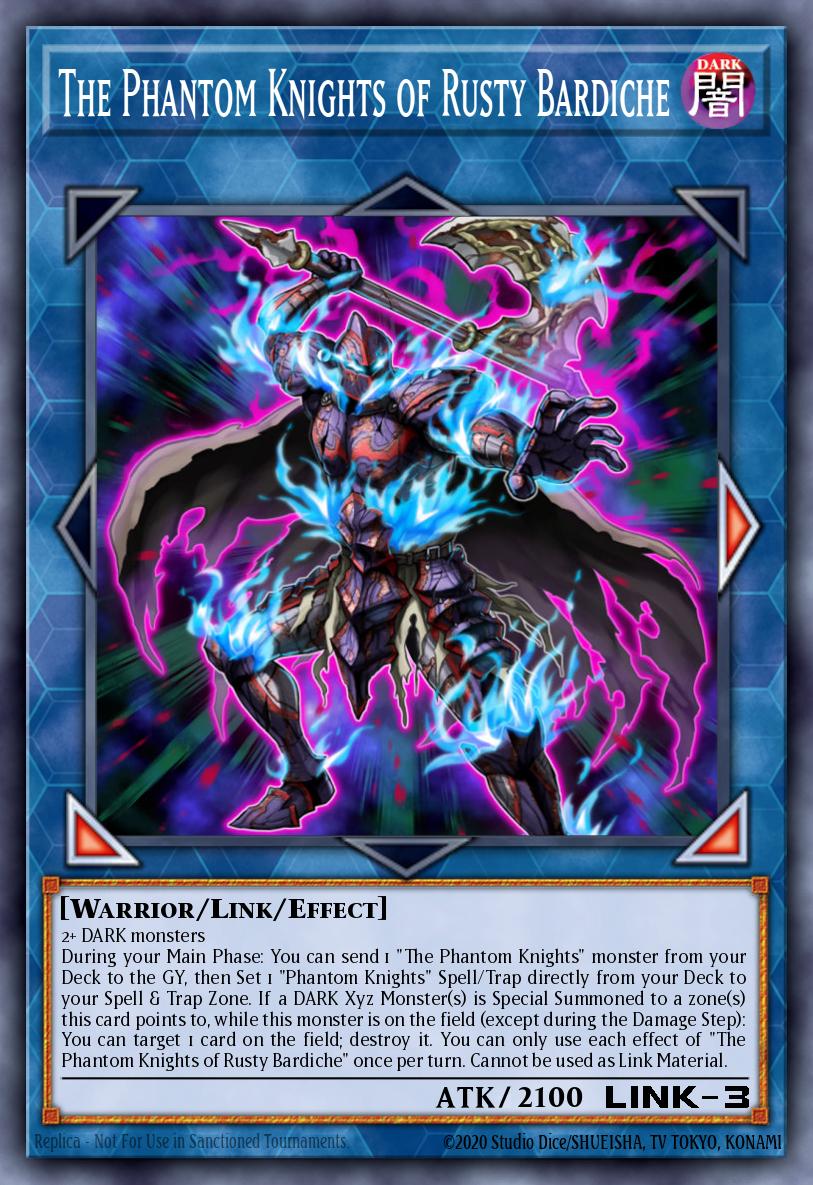
The Phantom Knights of Rusty Bardiche is a Link-3 monster that requires DARK monsters to make. It allows you to send any Phantom Knights monster to the GY to set a PK S/T directly from the deck. For a quick rundown of the targets, you can take a look at this article by my colleague Keebsters. This card alone could generate a +2 in terms of card advantage, which is nothing to laugh at.
Decks that utilized Bardiche changed with both the release of Dark Neostorm and the April 2019 banlist. In general, both versions of the deck had the same weaknesses with disruption to the main combo (Ash Blossom & Joyous Spring and S/T destruction, for example), but both were extremely powerful.
With Knightmare Mermaid being a thing, it was extremely easy to get the Bardiche out with very little investment into the combo.
Negate Turn
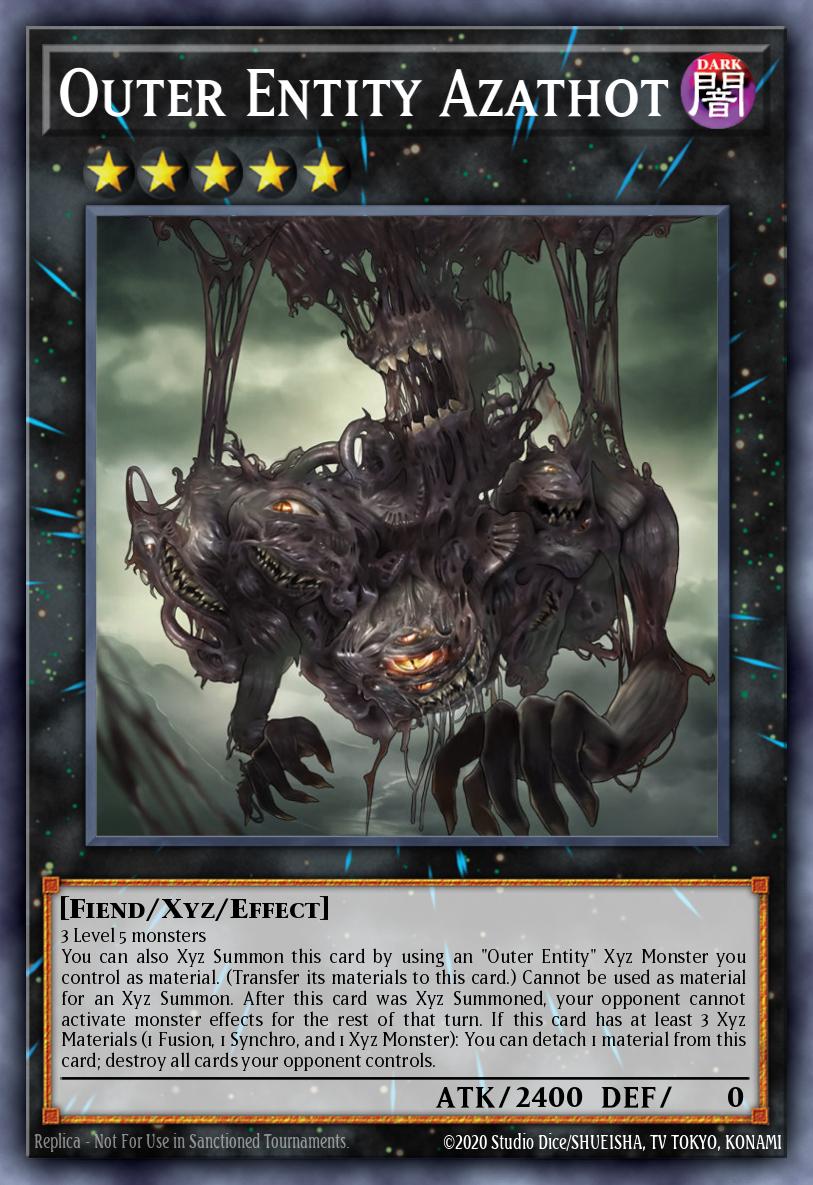 The first version of the deck focused on setting or searching The Phantom Knights' Rank-Up-Magic Launch in order to summon Outer Entity Azathot during the opponent's turn. Azathot makes it so that your opponent couldn't activate any monster effects for the rest of their turn; it was an effect that couldn't be negated by things like Infinite Impermanence or Forbidden Chalice.
The first version of the deck focused on setting or searching The Phantom Knights' Rank-Up-Magic Launch in order to summon Outer Entity Azathot during the opponent's turn. Azathot makes it so that your opponent couldn't activate any monster effects for the rest of their turn; it was an effect that couldn't be negated by things like Infinite Impermanence or Forbidden Chalice.Any two monsters would summon Knightmare Cerberus, which would go into Mermaid, which would summon Orcust Knightmare from deck. Galatea would follow soon after, leading to the Bardiche. Depending on how many lvl 4 monsters were on the field, you could either set a Phantom Knights of Shade Brigandine (for an extra lvl 4 monster) or directly search out the RUM. Time Thief Redoer was the R4nk of choice to bring out Azathot.
This way of playing the deck lead to the opponent being locked out of any relevant plays. Not only that, but if they did anything (like Normal Summoning a monster), Bardiche would be able to destroy that card when Azathot is summoned to its linked zone.
Unfortunately, the April 2019 banlist banned the PK RUM. Not to worry, we got what would likely be the best support that Orcusts would get in Dark Neostorm.
Pop 2, Negate 2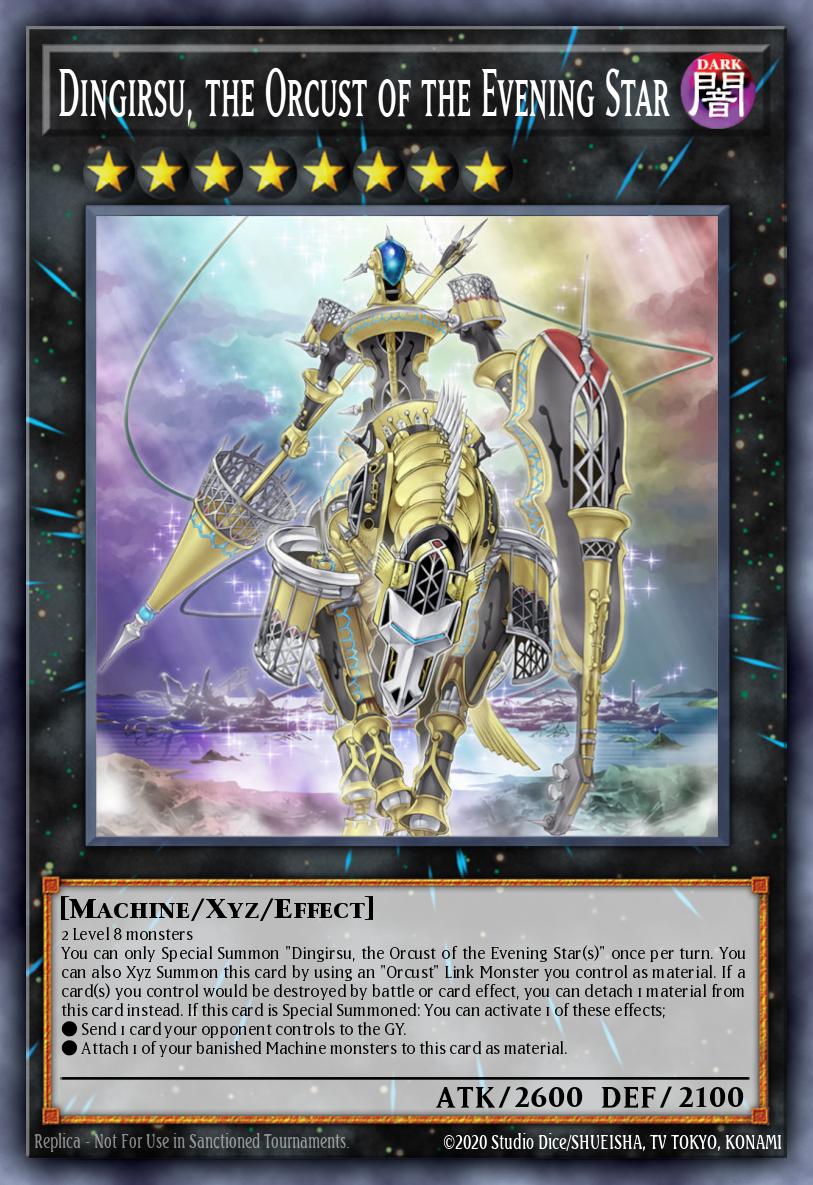
Konami released DANE in May of 2019. In it, two more pieces of support were released: the Counter Trap Orcust Crescendo, and Dingirsu, the Orcust of the Evening Star. You can refer to one of my previous articles for more information as to what these cards can do, and how they changed the Orcust playstyle.
It was a good thing that the RUM was banned before the release of DANE; it would have allowed players to go into True King of All Calamities, which is arguably better than Azathot. Luckily, the competitive scene did not have to deal with that. Instead, they dealt with mass destruction and negation.
Now that the RUM was banned, players turned to another great PK S/T: Phantom Knights' Fog Blade. It is a Continuous Trap that, when activated, targets a monster on its field and negates its effects. Not only that, it cannot attack, or be targeted for an attack. Thus, the main combo changed to utilize up to 2 Fog Blades for the end board. As for the Orcusts?
Bardiche destroys a card on the field if an Xyz Monster is Special Summoned to a zone it points to. Dingirsu can be summoned from the GY with Cymbal Skeleton. Thus, if you summon the Dingirsu to a Bardiche zone, you can potentially get rid of two cards on your opponent's side of the field. Combine it with Orcust Babel and you can do this during their turn!
July 2019 Banlist
Although other variants of Orcust appeared throughout this time (Pendulum Orcust, Lunalight Orcust, etc.), "Bardiche Turbo" was likely the best version. It performed well against most decks and was very consistent. My favorite version of the deck was "Normal Monster Turbo." Stuffing the deck with as many Normal Monsters as possible, the Orcust engine, and a handful of PK cards lead to "Full Orcust Combo" with any 2 Normal Monsters.
Unfortunately for all PK players out there, Konami banned Bardiche on the July 2019 banlist and for a moment, all thought that the ceiling of the deck was permanently lowered. What all of the doubters forgot was a specific card in the Extra Deck: Knightmare Mermaid.
The Orcust Free-For-All
Now that Bardiche was gone, nearly everyone and their mother began to run the Orcust Engine. Rogue decks everywhere became more competitive by just putting a few cards in the Main and Extra deck. Not only does Crescendo act as a searchable "omni-negate," Dingirsu is extremely powerful. I won't go into every single variant of Orcust, but I will mention ones that were popular in the metagame and give a small explanation as to why they were played. However, I will go into more detail with how pure decklists slightly changed as time passed, usually in response to the metagame.
Popular Variants
- Warrior Orcust: Although almost all Orcust lists play Armageddon Knight and Dark Grepher, these specific decks played more warriors, be it Goukis or other generic monsters. The main goal of this deck was to turbo out an Isolde, Two Tales of the Noble Knights and summon out Armageddon Knight from the deck. This is an important deck to keep in mind.
- Cyber Dragon Orcust: How would you like to end turn with both a Cyber Dragon Infinity and a set Crescendo? This deck synergized quite well with the Orcust engine. Cyber Dragon Nachster can help pitch your Orcusts into the GY, and in a pinch, can summon Dingirsu from the GY with its effect. A lot of decks began to either Main or Side a Chimeratech Megafleet Dragon to get rid of the Cyber Dragon field in one fell swoop.
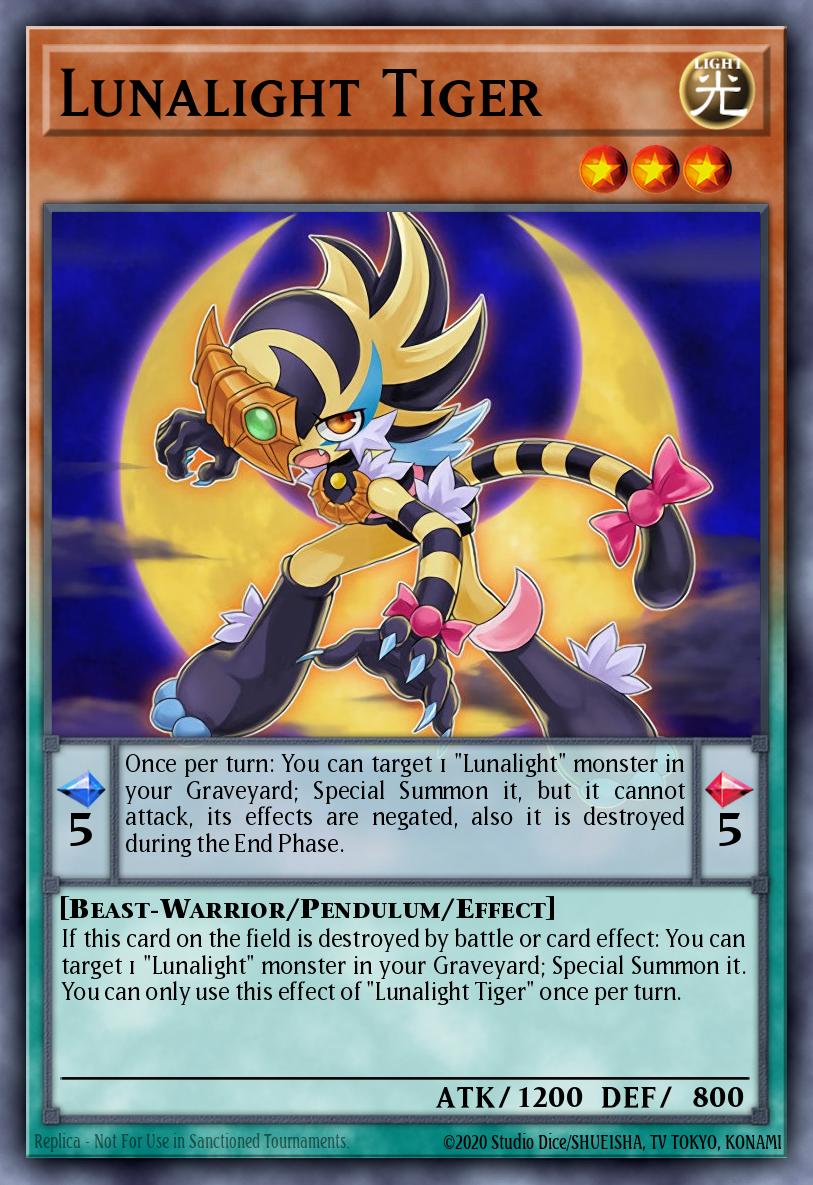
- Pendulum Orcust: Pendulums on their own are a pretty good deck. The Guardragon engine helped them jump up to a higher power level, allowing players to end turn on multiple negates. If you add the Orcust Engine to it, you can also add a Dingirsu for protection or a Galatea and Crescendo negate. This was also a popular variant of Orcust.
- Lunalight Orcust: If there is one card that allows this deck to be so good, it is Lunalight Tiger. While in the Pendulum Zone, you can Special Summon a "Lunalight" monster from the GY. While this is usually a once-per-turn effect, there are effects that can bounce it back to hand (Blackwing - Zephyros the Elite), and normal turns can use Wolf about 3 times. Making an Azathot before the whole combo also helps protect against hand traps. End boards sometimes included Crescendo negate or Dingirsu protect, a Knightmare Gryphon, and a set floodgate of choice, sent by Curious, the Lightsworn Dominion. This is also an important deck to keep in mind.
Pure Orcust Deck Evolution
The pure Orcust decklist changed quite a bit over this period between the July and October 2019 banlist. As the meta shifted to other decks with new card releases or combo discoveries, Orcust players adapted to the new changes.
Engines
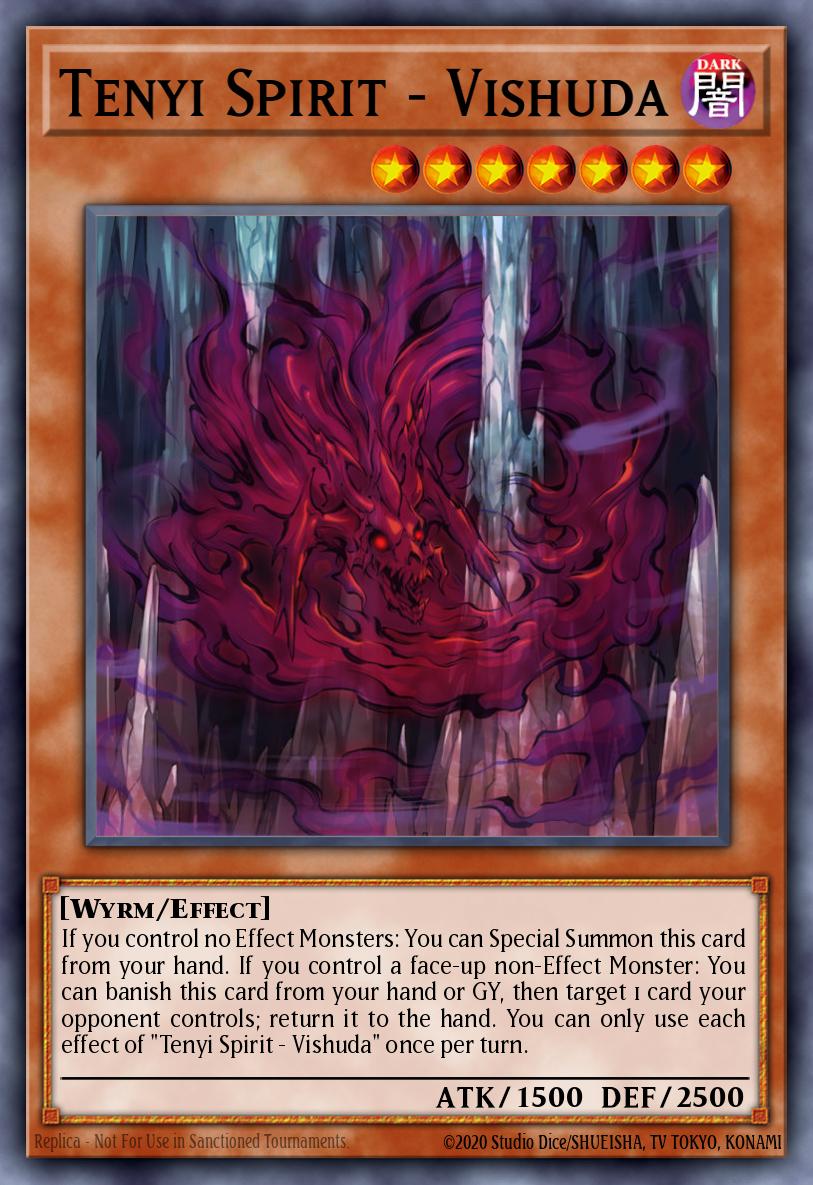 One of the first things that changed was the Trickstar engine. Prior to July 2019, the Trickstar engine was an excellent addition to the deck. Trickstar Light Stage was a one-card Full Orcust Combo. Trickstar Candina would search out Trickstar Corobane, and now you have two monsters. Lightstage also helps with locking down backrow that can potentially disrupt your own combo. After Konami limited Lightstage in the July 2019 list, players phased it out. One Lightstage and one Terraforming lessened the consistency severely; many felt that it was not worth running 4 slots in your deck for an inconsistent engine.
One of the first things that changed was the Trickstar engine. Prior to July 2019, the Trickstar engine was an excellent addition to the deck. Trickstar Light Stage was a one-card Full Orcust Combo. Trickstar Candina would search out Trickstar Corobane, and now you have two monsters. Lightstage also helps with locking down backrow that can potentially disrupt your own combo. After Konami limited Lightstage in the July 2019 list, players phased it out. One Lightstage and one Terraforming lessened the consistency severely; many felt that it was not worth running 4 slots in your deck for an inconsistent engine.Players began to run the Tenyi engine. Tenyi Spirit - Vishuda could Special Summon itself if you control no monsters and while in the GY, you can banish it while you control a non-effect monster to return a card on your opponent's field to their hand. Monk of the Tenyi was the Link monster utilized for the engine. This card was pretty good, since it forced out some sort of response by the opponent; otherwise, they would lose a card.
Starters, Extenders, and End Boards
As time passed, players also began to play Knightmare Corruptor Iblee. Alone, it was a one-card starter for
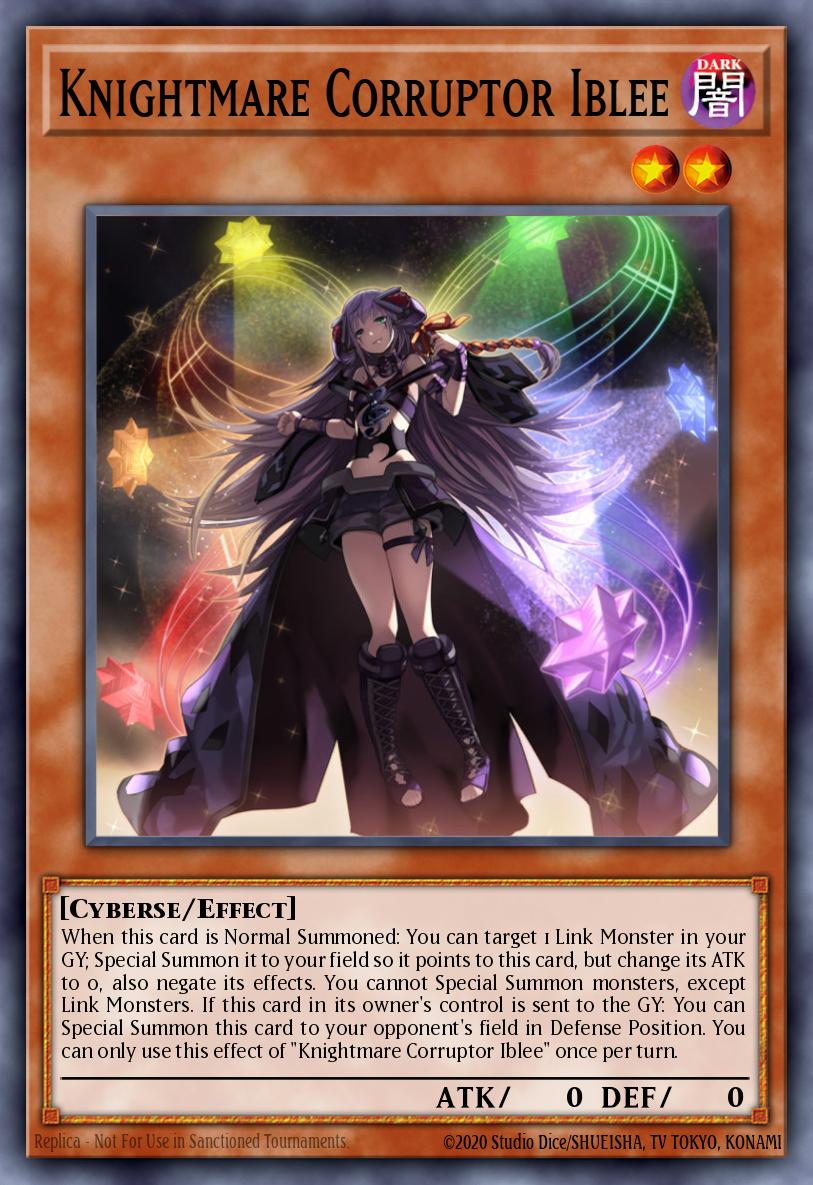 the Orcust combo that locks the opponent down to being able to only Special Summon Link monsters. The release of Nibiru, the Primal Being cemented its addition to Orcust decks. If used, the opponent is unable to activate Nibiru in the middle of your combo.
the Orcust combo that locks the opponent down to being able to only Special Summon Link monsters. The release of Nibiru, the Primal Being cemented its addition to Orcust decks. If used, the opponent is unable to activate Nibiru in the middle of your combo.Going first, the end board also changed from before and after the banlist. Prior to July, you had the typical Bardiche-Dingirsu play. After Bardiche's ban, the end board turned into a Linked Galatea and a Dingirsu with 2 materials, with a set Crescendo. Depending on what else you opened, players can sometimes end turn with a Bomber Dragon and a Babel. Players also began to run Instant Fusion in the deck. With the combo and an Instant Fusion, it was possible to get the Galatea-Dingirsu-Crescendo board along with an El Shaddoll Winda on the field. This meant that the opponent was only able to Special Summon once per turn. Dingirsu would protect the Winda from being destroyed by Instant Fusion's effect during the End Phase.
In general, the going-second board was just a Borrelsword Dragon with a Dingirsu on the field, which totaled at least 8600 damage through an empty board. Some people would also build "going-second" variants that main decked any number of cards that took advantage of or helped break boards: Mind Control, Shaddoll Fusion, Evenly Matched, to name a few.
Conclusion, for Now
With the metagame in a bit of a shambles, players everywhere began to prepare for the Orcust matchup. It was around this time that Artifact Lancea became a staple in side decks. This card was singlehandedly able to stop Orcust decks in their tracks; without the ability to banish cards, how do they do their plays in the first place?
However, we are nowhere near the end of the Orcust timeline. We covered the first two of the major events I mentioned at the beginning of the article, the release of DANE and the banning of Bardiche. In the next article, I will talk about the other two major events in the Orcust life cycle. Until then, enjoy the other articles on this site written by my colleagues!




